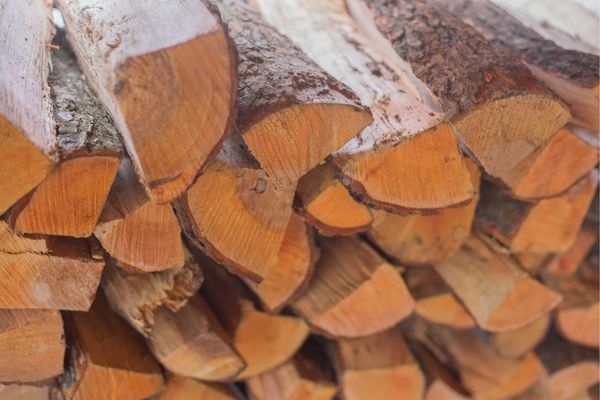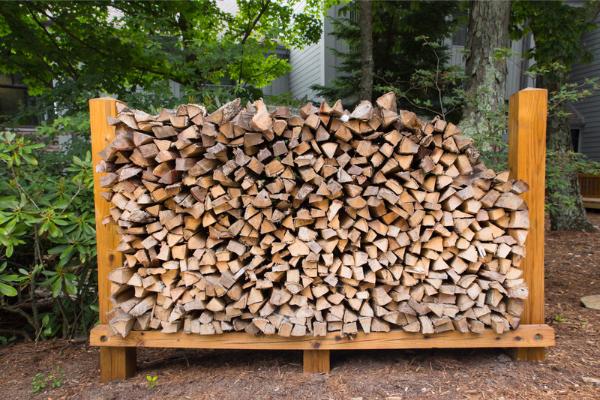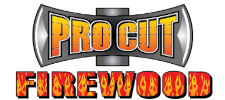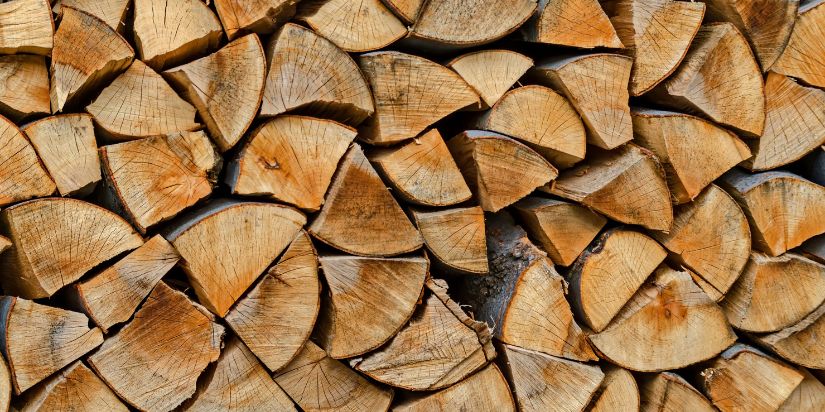ProCut Firewood offers premium firewood that burns brightly for many hours, but another important factor is at play: quantity. After all, the more you use, the more you’ll need. Most laymen know neither how to measure firewood nor how much firewood is a cord, so we’re here to help. Do you want to avoid buying more firewood than you’d ever want or making six trips to a store in a single month? Boy, do we have an unsolicited unit of measurement for you!
What Is a Full Cord?
To summarize all firewood measurements, vendors like us sell firewood by the cord. A full cord is 128 cubic feet of firewood, which includes about 600 to 800 logs. Often, a firewood cord is three stacks of logs that occupy 4’ x 4’ x 8’ feet. Residential customers may not need a full cord. Even for commercial customers, full cords usually last a couple months. Because entire firewood cords aren’t usually necessary, all vendors sell smaller denominations. The primary difference among vendors is how many different sizes they have. Fractions of full cords aren’t difficult to prepare, some of which have specific names.
 How Do Other Cords Compare?
How Do Other Cords Compare?
A full cord or half cord might be a good place to start, but there are other cord of wood sizes. Some cords are abstract measurements that depend on the vendor, while others are much more concrete. The following cords have been common enough to receive names.
Running Cords
A running cord is a full cord that hasn’t been divided into three stacks. The amount is the same. We’re just talking about a single row of wood.
Face Cords
About a third of a cord, a face cord is usually one of a full cord’s three rows. “Face” references the part of a head most would consider to be a face. Less intuitively, some call this a rick of wood.
Sheldon Cords
A sheldon cord is any cord bigger than a full cord. A sheldon cord can regard 129 cubic feet of firewood or 10,000 cubic feet. Anyone who needs a sheldon cord might benefit from buying smaller cords together, as sheldon cords aren’t usually for sale anyway.
Stove Cords
A stove cord is a face cord whose logs are 12 inches long. While vendors often cut logs into 16-inch pieces, 12-inch pieces are small enough for stoves. Stove cords vary across companies, but a stove cord’s purpose is to provide wood small enough to fit into a stove.
How Do Firewood Companies Differ?
That a cord is 128 cubic feet of firewood is most important to remember, but regulations for cord of wood measurements don’t cross state lines. Not everyone chops wood into the same sizes, and some vendors aren’t honest about what’s for sale.
Different Measurements
The standard length of an individual log is 16 inches. As a full cord is usually four feet deep, three stacks of 16-inch logs divide most easily into thirds. Some vendors might use four rows of 12-inch logs. Others might use logs as long as 24 inches, which yields only two rows. Especially if you’re buying a face cord for which log length makes the biggest difference, remember to ask vendors how they chop their wood. You’re going to be stuck with your order for weeks to months.
Shady Business Practices
When some vendors stack firewood, they stack it as loosely as possible. They may not let you stack the firewood yourself. If you already have vague suspicions, this is a red flag. A customer’s request to stack wood independently is commonplace, so vendors should have no problem with you doing that.
The Best Cord for You
Now that you’ve familiarized yourself with the most common cords, you might have a sense of which one you need. As you read the following, recall the explicit measurements and individual logs you’ll receive. Most purposes fall into these three categories.
Special Occasions
You want to light a bonfire outside for a party. Maybe you’re camping with a few friends. This calls for bundles of firewood. To sell firewood by the bundle is to sell about 5-7 logs at a time. If you want a hot fire to burn for several hours, you’ll need about five bundles. Fires burn a little beyond one bundle per hour.
Using the Fireplace
If you’re going to use firewood to heat your home every other week, you’d benefit from a face cord whose depletion would take a few months. You shouldn’t buy anything bigger than a face cord unless you use firewood exclusively to heat your home. A fireplace can’t house more than three logs at a time, so weekly use will dig only moderately into your supply.
Staying Warm in the Winter
If you depend on firewood to keep your home cozy all winter, a cord might get you through ten weeks. To heat most homes, customers will need two cords for a full winter. Still, Minnesota isn’t a warm place, and many of our customers might benefit from three or more cords.
How to Store a Cord
Whichever cord you purchase, best practices are the same. Keep the firewood in as dry a place as possible. Use pallets or bricks to keep it above ground, and leave lots of space among the logs as you stack them to allow for greater ventilation. Not only does moisture make fires much harder to start, but it invites mold that eats away at your firewood’s density, thereby shortening burn times. If you keep your firewood outside, keep it under a tarp. If you bring it inside, make sure it’s dry enough. Keeping fresh wood in your home might invite unwanted guests, from bugs to humidity.

Storing firewood above ground is a great way to fight moisture.
Be Wary of Picking Up Firewood
Cords are big, especially in comparison to pickup trucks. Don’t try to put a full cord inside a pickup truck. Only a half cord can fit, and even then it’ll have to be packed pretty tightly. Conversely, if a delivery driver shows up in a pickup truck and tells you he’s got a cord, something’s up. That driver is either wrong or lying.
Use Fresh Wood in a Pinch
If you’re buying firewood in bulk, you might benefit from settling for fresh wood. Many vendors offer fresh wood as the cheapest possible option. If you’re going to tap into a store of firewood over a few months, you might as well “season” fresh wood yourself since seasoning is little more than leaving firewood in a dry place for a long time. By the time you exhaust the good stuff, you can have seasoned wood waiting for you. It’s not kiln-dried hardwood, but it might save some money.
Warming Up in the Twin Cities
There’s no point in buying the right quantity if you don’t buy the good stuff. As firewood vendors certified by the Minnesota Department of Agriculture, we dry our firewood in kilns at 265 degrees Fahrenheit for 36 hours. The resulting goodness is easy to light and completely free from pests, mold and moisture.
Though our yard in Rochester is 90 miles from St. Paul, we’ve been delivering firewood across the whole region since 1989. This includes cities like Edina, Inver Grove Heights, Stillwater and many more! When you’re ready to talk with us about what you need, give us a call at 507-280-7780, and if you live close enough, you’re welcome to drop by.







